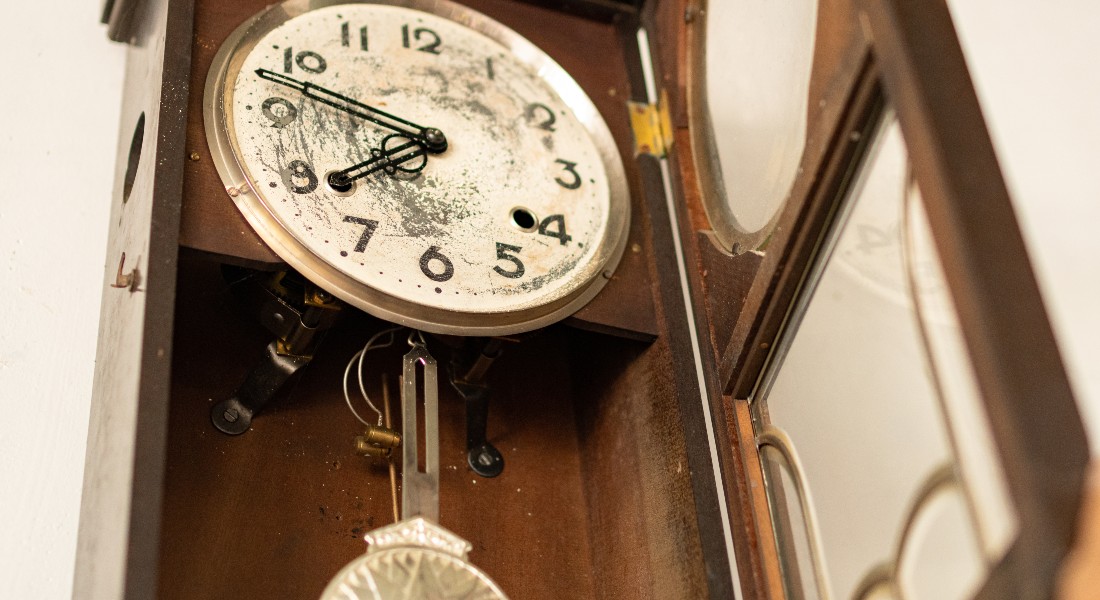New understanding of the body’s cells: Synchronise like pendulum clocks
Researchers from the University of Copenhagen have discovered that old grandfather clocks and human cells have a central thing in common: They move in synchronisation. This strengthens the performance of our cells and makes them better at combating diseases This new knowledge is an important step towards understanding and preventing diseases such as cancer and diabetes and has been published in the prestigious journal Cell Systems.

In 1655, the Dutch mathematician and inventor of the pendulum clock, Christian Huygens, discovered something strange. If he hung two identical pendulum clocks next to each other, they would always synchronise within 30 minutes.
New research from the Niels Bohr Institute at the University of Copenhagen now shows that the phenomenon observed in old grandfather clocks and cuckoo clocks also applies to the cells of the human body. For, like a symphony orchestra, the cells synchronise with each other in order to perform the vital tasks of producing energy, transporting oxygen or fighting diseases more efficiently.
“We’ve discovered that, in the same way as the pendulum clocks in Huygens’ experiments beat in synchronisation, the cells of the body also work in uniform beats. This helps them achieve a higher degree of collaboration, enabling them to perform their tasks better and more efficiently,” says Postdoc Mathias Heltberg, who has created the physical and mathematical models behind the experiments, together with his colleague Prof. Mogens Høgh Jensen and PhD student Malthe Skytte Nielsen.
More superpowers in cells when working together
Translated into the world of a cell, the oscillations from the clock correspond to the increase and decrease in the quantity of proteins and other molecules that the cell alternately produces more or less of to perform different tasks in the body.
To examine whether the cells turn their production up and down in step with each other, the researchers created an artificial oscillation using two different transmitters that were injected into yeast cells. One of the transmitters was alcohol, and the other was a transmitter that imitated an infection and would therefore trigger the immune system of the cell.
Specifically, the researchers examined how the super protein NF-kappa-B fluctuates up and down. This is a protein found in most of the body’s cells and it plays a key role in countless processes. For example, the super protein is responsible for kickstarting the immune system and turning up the production of itself when the body is exposed to an attack from a bacterium.
Here, the study showed that the concentrations of the super protein were higher in the cells when they worked synchronously than if they did not.
“We had two hypotheses in advance. Either the two transmitters that hit the cell at the same time would throw it into complete chaos where it no longer functioned. Or the cell would control itself even better and synchronise its response and work in step with the other cells, which was what happened,” explains Mogens Høgh Jensen.
Future prevention of cancer and diabetes
According to the group of researchers at the Niels Bohr Institute, the new discovery is particularly interesting because the fluctuations in the cell play a central role in our understanding of how the cell is controlled. A greater understanding of these processes can pave the way for new methods for treating serious diseases in the future.
“If we can understand the fluctuations, we will also know more about what goes wrong when defects in the cells lead to the body’s control systems breaking down and causing cancer or diabetes. Therefore, our results are an important step towards understanding how the body controls its cells, so that we can later develop biochemical tools that can prevent diseases,” says Malthe Skytte Nielsen.
Even though the researchers have now become a little wiser about the smallest building blocks of the body, there is still much that we do not know about the inner life of the cells. For example, it is still not known exactly how the cells communicate with each other and start working in step.
“It’s my big dream to understand how cells, that is living organisms without a brain, can transmit and translate signals and regulate themselves. This is one of the biggest questions of science, and one that I’ve so far dedicated most of my research career to,” says Mathias Heltberg.
The study has been conducted in collaboration with researchers from Peking University who have conducted experiments on yeast cells based on the mathematical and physical models made by Mathias Heltberg, Malthe Skytte Nielsen and Mogens Høgh Jensen.
Contact
Mathias Heltberg
Postdoc, PhD
Niels Bohr Institute
University of Copenhagen
Mobile: +45 26191889
Email: mathias.heltberg@nbi.ku.dk
Malthe Skytte Nielsen
PhD student
Niels Bohr Institute
University of Copenhagen
Mobile: +45 28901902
Email: malthe.nielsen@nbi.ku.dk
Mogens Høgh Jensen
Professor, Dsc
Niels Bohr Institute
University of Copenhagen
Mobile: +45 28755371
Email: mhjensen@nbi.ku.dk
Michael Skov Jensen
Journalist and Team Coordinator
Faculty of Science (SCIENCE)
Mobile: +45 93 56 58 97
Email: msj@science.ku.dk
